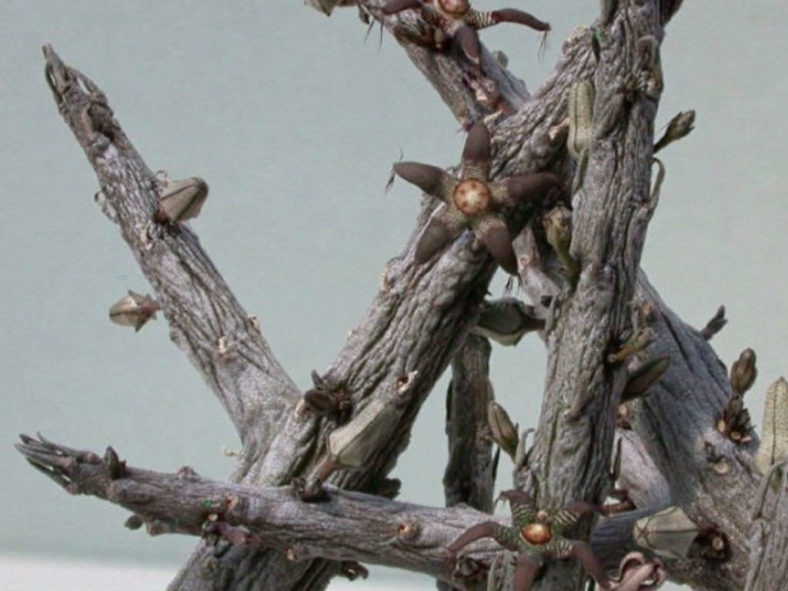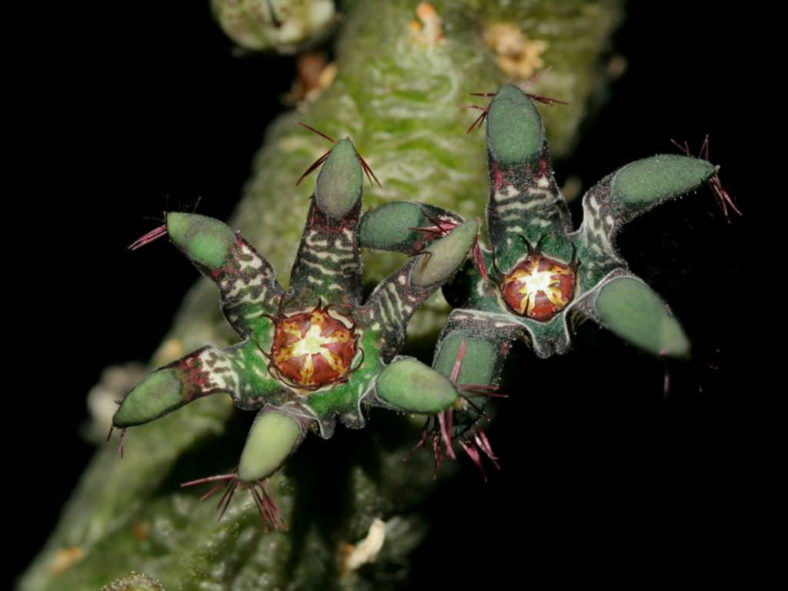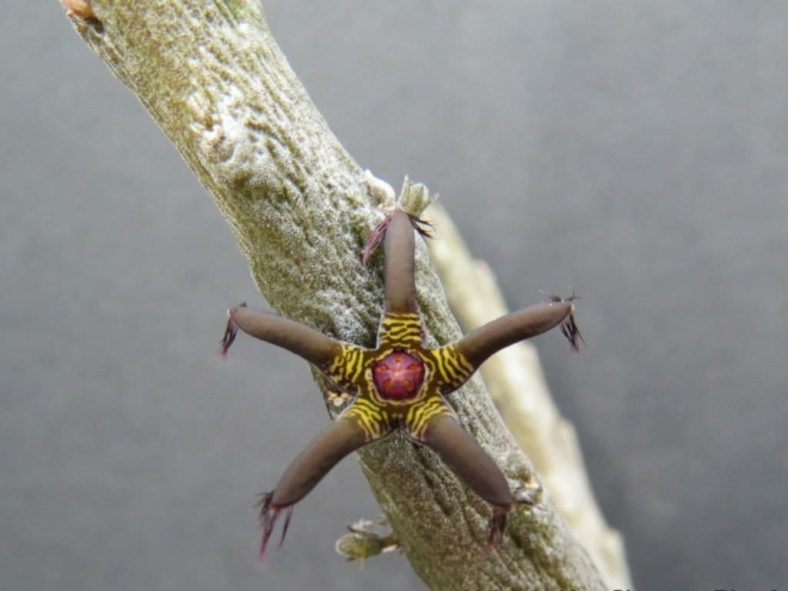Scientific Name
Rhytidocaulon macrolobum Lavranos
Synonym(s)
Ceropegia macroloba, Rhytidocaulon macrolobum subsp. macrolobum
Scientific Classification
Family: Apocynaceae
Subfamily: Asclepiadoideae
Genus: Rhytidocaulon
Origin
Rhytidocaulon macrolobum is native to Saudi Arabia, Yemen, and Somalia.
Description
Rhytidocaulon macrolobum is a small succulent with obscurely 4-angled light to dark brown stems with a wrinkled texture and lance-shaped to narrowly triangular leaf rudiments. The stems are solitary or sparingly branched. The primary stems are up to 12 inches (30 cm) long and up to 0.8 inches (2 cm) in diameter. Branches are shorter and more slender.
The flowers are up to 0.8 inches (2 cm) across and appear in 1- to 3-flowered inflorescences on very short stalks in fall. They emit a strong scent of decaying plant material with a citric tendency. The corolla lobes are velvety, whitish to green towards the base, with dark purple transverse lines or coarse spots, dark dull purple, brown, or dark green apical half, and two clusters of a few purplish cilia near the apex. The corona in the center of the flower is purple-red with a white base.

Hardiness
USDA hardiness zone 9a to 11b: from 25 °F (−3.9 °C) to 50 °F (+10 °C).
How to Grow and Care
Stapeliads are relatively easy to grow. However, they should be treated as outdoor plants as they will easily rot indoors and cannot flower without exposure to outdoor temperature fluctuations. They should be grown under cover so that watering can be controlled. They require a reasonable amount of sunlight to promote flowering and maintain a well-shaped plant. Very shady positions will produce very poor flowering. Stapeliads come from climates where they survive extremely high temperatures in the summer months, so most growth is in spring and autumn, with flowering in autumn when the weather starts to cool down. Water in moderation when needed in the growing season, ensuring the soil is pretty dried out between waterings. Do not water between November 1 and March 1.
The easiest and best way to propagate Stapeliads is from stem cuttings, which can be taken virtually throughout the year. Using the seed is also a method of propagation.
See more at How to Grow and Care for Stapeliads.
Links
- Back to genus Rhytidocaulon
- Succupedia: Browse succulents by Scientific Name, Common Name, Genus, Family, USDA Hardiness Zone, Origin, or cacti by Genus
Photo Gallery
Click on a photo to see a larger version.



